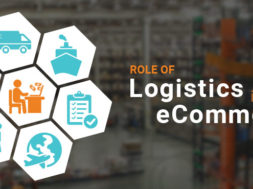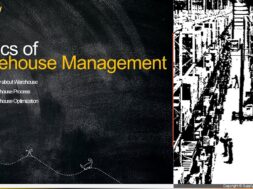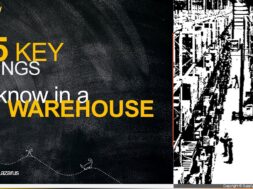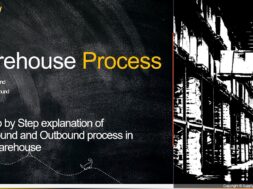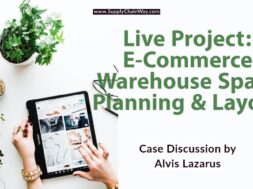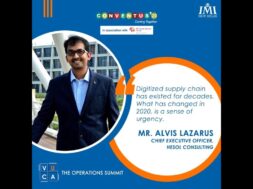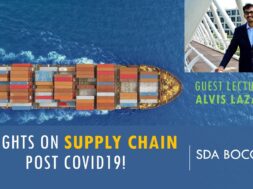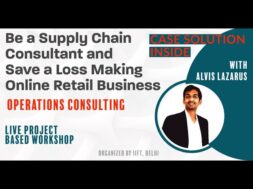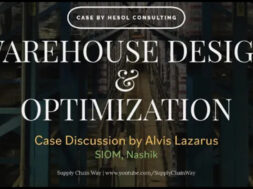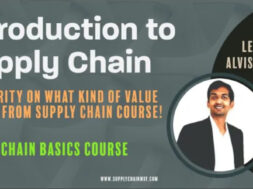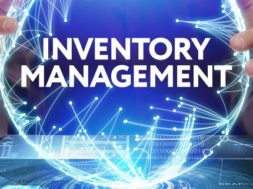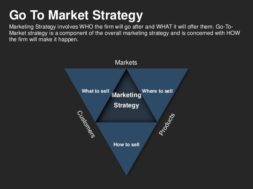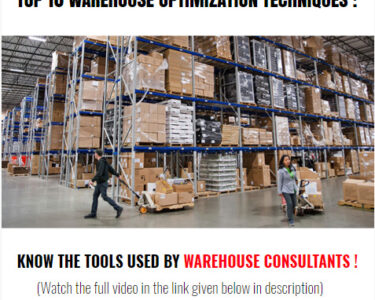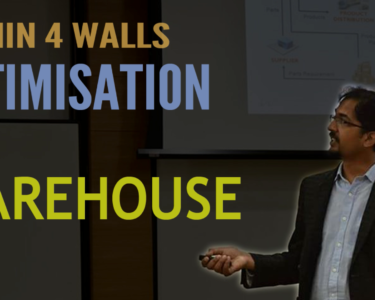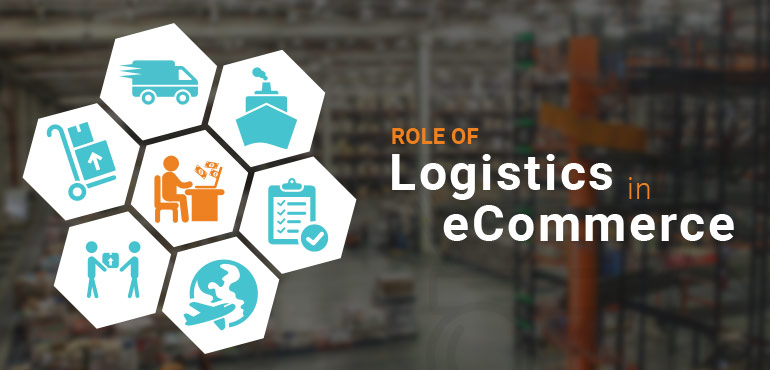
Logistics – A Key Lever in E-Commerce Marketplace
Before we discuss about the Logistics in E-Commerce market place, let’s see a basic supply chain and the scope of logistics within the supply chain and then move onto the main subject. The schematic diagram on the right-hand side shows a basic supply chain model.
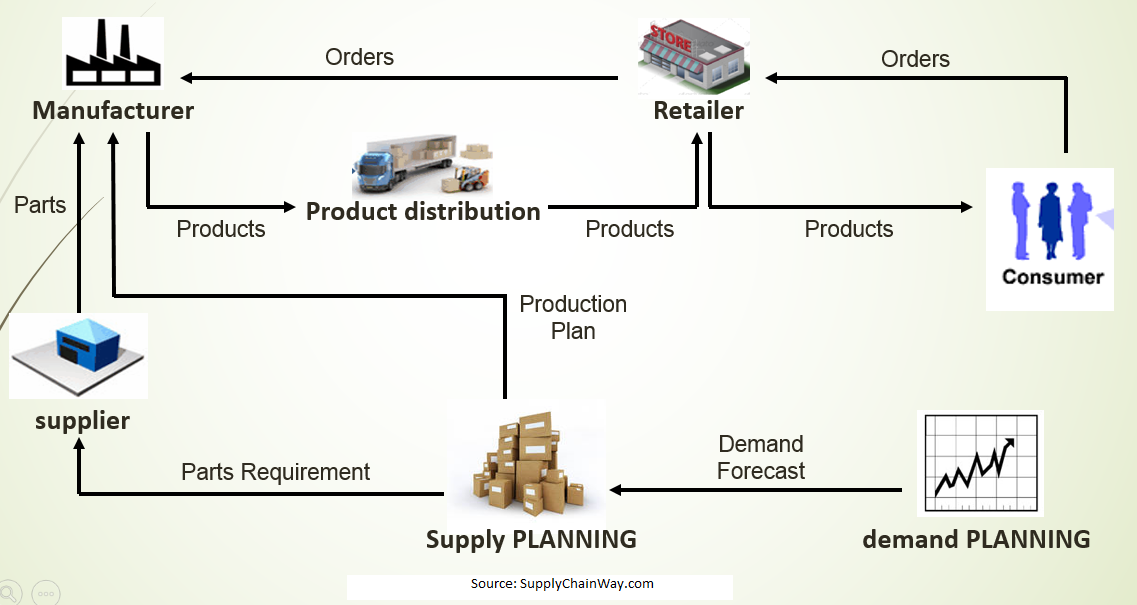
All the movement of product in raw material, semi-finished and finished goods form from point A to point B is the scope of logistics.”
E-Commerce is a part of the overall supply chain and it’s just another distribution model to receive orders and distribute the products to the customers. All that is between the order from the customer and the order completion is the ‘Logistics’ That explains the criticality of logistics and certainly logistics is the key lever with the overall E-Commerce model.
E-Commerce Transaction Types:
Electronic Commerce (E-Commerce) is a platform in which buying and selling of goods is done and for this internet is needed. Based on the Buyer and Seller, there are 3 types of E-Commerce:
-
C2C (Consumer to Consumer)
C2C transactions happen between customers. The E-Commerce players provide the platform and the processes, through which the transaction takes place. A commission on the transaction value will be the gain for the E-Commerce player. Example of C2C businesses are – Online auction (E-Bay), Online Classifieds, Online Real estate esp. Rent (Commonfloor.com, Magicbricks.com, and 99acres.com)
-
B2B (Business to Business)
B2B are the transactions between businesses. Examples of this model are – Indiamart.com, TradeIndia.com, and Sulekha.com.
-
B2C (Business to Consumer)
B2C is the most common form of E-Commerce in which a variety of goods are available. Few categories to name are Electronics, Apparels, White goods, Footwear, Stationery, and services like Online Travel Booking and Online Matrimonial websites. Few key players at different categories of B2C are Flipkart, Snapdeal, Amazon, Cleartrip, Expedia, Ibibo, IRCTC, MakeMyTrip, Yatra, Jabong, Myntra, Yepme, Zovi, FabFurnish, PepperFry, UrbanLadder, Zansaar, BigBasket, EkStop, LocalBanya and ZopNow.
Main Flows in E-Commerce:
There are 4 key flows in E-Commerce and they are (1) Product Flow, (2) Cash Flow, (3) Information Flow, and (4) Reverse Product Flow.
Product Flow:
This is the movement of the goods from the suppliers till the customers. Logistics players play a key role in moving products through this chain.
Cash Flow:
Cash flow is from the customers back to Suppliers through the multiple stake-holders in the E-Commerce model i.e. from Customer to E-Commerce players and Supplier through intermediaries.
Information Flow:
This information flow happens in both the directions and a key flow which is vital for the proper functioning of the end to end activities in the E-Commerce model.
Reverse Product Flow:
This specifically means the product returns and damages which has to be picked from the customer and returned to the supplier through the E-Commerce player.
E-Commerce Operating Models
Depending on the mode of operations, there are two types of E-Commerce models. They are (1) Inventory Model (Buy and Sell Model) & (2) Marketplace model. In the former E-Commerce model, products are procured, stored and delivered after the order is received and, in the latter, products are displayed in the portal and once the order is received the products are picked and delivered to the customer. Both the models are shown in the below schematic diagrams.
-
Market Place Model
In Marketplace model, products from multiple vendors are displayed in the online platform (Website) and the products could be from Brand, Shops or even Individual person. The marketplace provider takes care of the marketing and attracting customers, ensuring track of transactions and the user interface, whereas the vendor who is displaying his product will take care of availability of product and shipping. Marketplace provider takes a percentage of the sale as his revenue from the vendor. Marketplace doesn’t hold any physical inventory and thereby avoiding holding costs. Hence, Marketplace can offer a wide variety of products but the major concern for this model is the real time data and information flow between vendor and market place systems and product quality.
-
Inventory Model (Buy & Sell)
In Buy and Sell model, the products are purchased by the E-Commerce organization and stocked at their warehouses. Those procured products are displayed on the website and once the customer purchases the product, the product is delivered to the customer at his/her doorstep. In this model, huge inventory holding cost is a major setback but the benefit is the product can be delivered quickly to the customer and also highest level of customer experience can be provided since the E-Commerce provider manages and accountable for the delivery and quality of the product.
E-Commerce Logistics (Last Mile)
There are a lot of ways the Last Mile delivery is planned and few time slot-based deliveries are explained below:
-
Scheduled delivery
In scheduled delivery, Customers can select any specific date for delivery within a specified time period after placing an order. For example, Flipkart offers a window of 7 days within which customer can select a delivery date.
-
Same-day / Next-day delivery
If customers do not prefer a scheduled delivery, they can opt for SDD (Same Day Delivery) or NDD (Next Day Delivery). E-Commerce players offer this option for most tier 1 and tier 2 cities. Though it is the most preferred option of the customer and they need the ordered products immediately, this needs a well-coordinated logistics planning and execution. To achieve optimum logistics cost in this model, substantial volumes are needed every day on all the lanes where this SDD/NDD options are offered.
-
Slotted Delivery
Customer can pick a preferred delivery slot and the slot timing can vary from 2-4 hours. BigBasket.com offers 2 hours slot and offers around 4 slots in a day. After the order is placed by the customer, they display the available slots for the same day and the next day for the customer to choose from.
-
Open Box Delivery
One of the major challenges faced by the E-Commerce players is ‘Product Returns’. These returns could not be questioned or argued with customer since the product is not seen during delivery and it can badly impact the customer experience and may end up in losing market share. Around 30-40% of the return reasons are product damages and the solution to this is ‘Open Delivery’. In this model, the product is unpacked and displayed to the customer. Also, the customer signatory would be received in an online form using a tab or a hard copy of a form. This can be a valid proof and means to solve most of the post-sale issues coming out of product damages.
Though ‘Open Box Delivery’ is not going to solve all the issues, it will certainly solve most of them. For example, a customer who signed off on a form after receiving his brand-new laptop as open delivery can’t come back and complain that the laptop screen is fully broken. Another great advantage of this model is – Any genuine intact shortages or damages found out during Open Box Delivery, can be taken back in the same delivery vehicle avoiding extra reverse logistics cost and we can avoid customer waiting time significantly since the replacement product can be initiated immediately. Open Box Delivery will increase your delivery time a bit and may negatively impact the number of deliveries per vehicle/trip. Currently, this model is not used by any E-Commerce players but definitely this is in pipeline.
-
Plug and Play
The final model is the ‘Plug and Play’. As the name implies, the product is plugged and played during the forward flow itself. This would not only sort out the product damage claim during post sales but also ensures that the product is in working condition during the time of delivery. Though it sounds great, effective implementation of this is a big challenge. The reason is – this model expects the field executives (FE) to actually set up a product and shows it working condition which demands high quality people and training for the FE(s). Hence, Plug and Play has to be evaluated sector-wise and can be switched-on on segments where it will be effective. Even this model is not in practice but we can experience them soon.
Snapshot of Logistics Industry in India
Logistics in India is highly un-organized and the unorganized pie is close to 80% of the 150+ Billion $ logistics industry. There are close to 35,000+ pin codes in India and even the big names of Indian logistics industry like Gati, India Post, Blue Dart, DTDC have access only up to 14,000+ pin codes. But, even within that smoother operations happen only at around 6,000+ pin codes. That tells the story of the long way ahead of the logistics industry. Logistics Infra, Indirect Taxation and the documentation protocols are the three main bottlenecks on this Industry.
E-Commerce Logistics Unit Performance Data
E-Commerce players use either home grown logistics operations else rely on 3PL or a mix of both. Delivery lead time varies from same day delivery to a max of 5-7 days. Higher lead times are typically for north east distribution and for ODA (Outside Delivery Areas) locations.
Delivery cost per parcel considering most of them are within 1-1.5 kgs., costs between INR 40 to INR 175. Also, COD (Cash on Delivery) adds additional INR 40 to INR 100. This is the base logistics cost and there are many variations like voluminous products, express vs non-express, special packaging etc.
In general, E-Commerce players operate at a total logistics cost (TLC) of around 10-15% of sale which is so high compared to the traditional retail logistics costs of 2-5% of sale value. The major reasons are air shipments, higher customer returns and also higher importance to service levels which hits you at the load optimization and thereby on the cost.
Market Place Logistics
Market Place Logistics have two parts to it – First Mile Logistics (Consolidation | Pick Up) and Last Mile Logistics (De-Consolidation | Delivery).
We have two options to handle the market place logistics – (1) Direct delivery by Seller and (2) Delivery by E-Commerce player. There are a lot of pros and cons. Though by the outlook it seems that direct delivery is preferred option, I stand the other way since the E-Commerce players totally exposes the most crucial customer experience and loses control over it. This will actually open up a lot of other logistics issues and will hit our bottom-line. Hence the suggested option is for the E-Commerce players to manage the logistics with a mix of in-house and outsourced 3PL.
“In Nutshell, there are a lot of logistics start-ups budding up keeping the focus on E-Commerce organizations and all of them are doing pretty well. But from the E-Commerce organization standpoint, Market place logistics impacts all the key value propositions – Right Product, On Time delivery and Customer Experience and more importantly have a lion’ share on the bottom-line.”
Hence, logistics is one function which has to be in cent percent control for the organization to spear-head and also break even in the long run.
